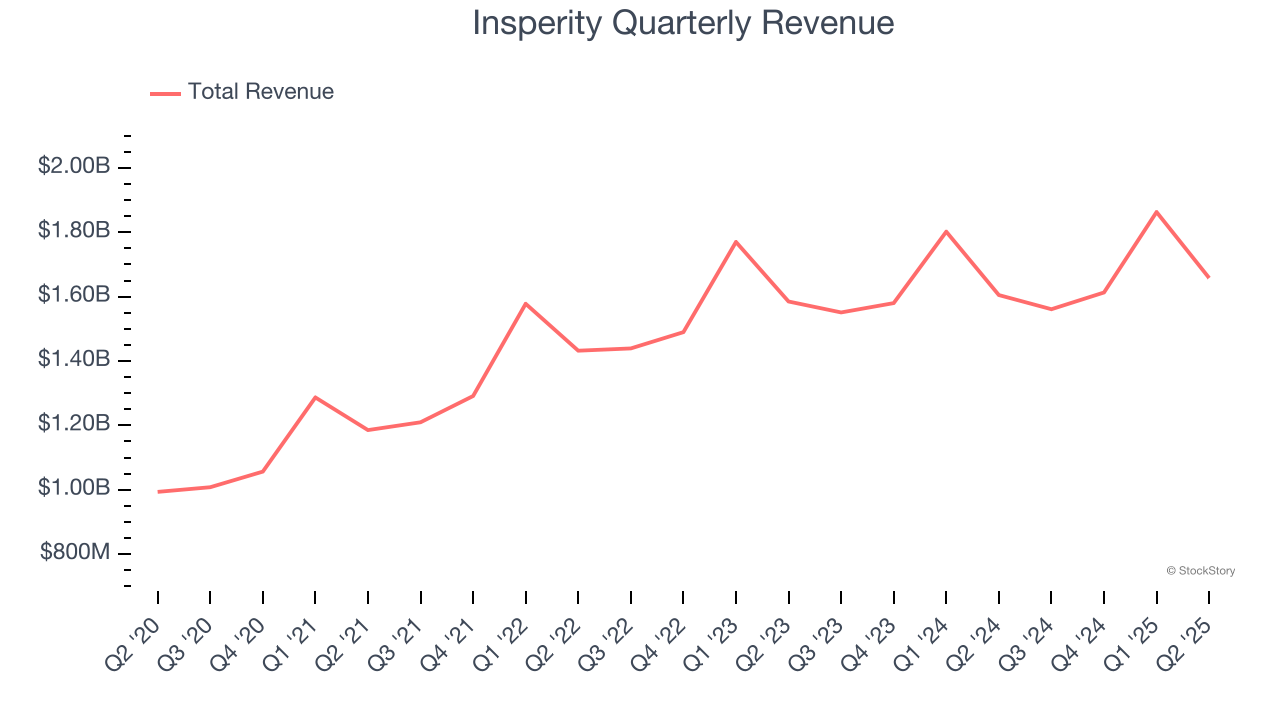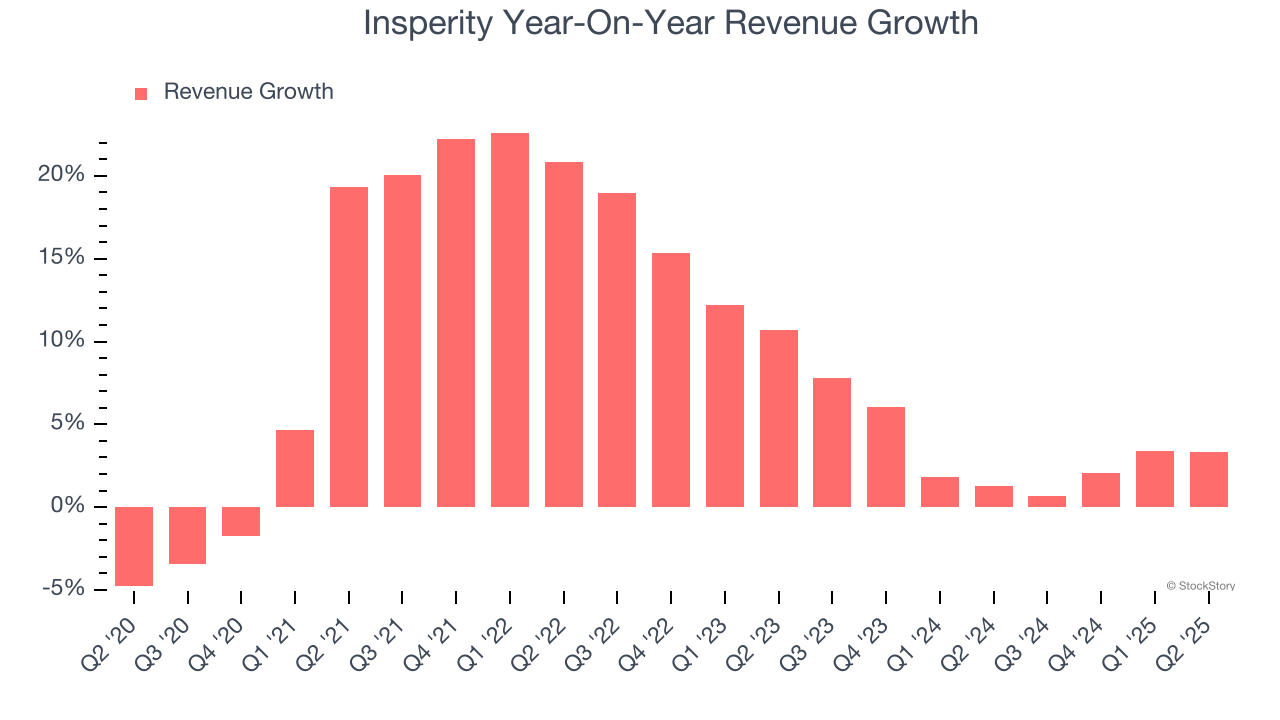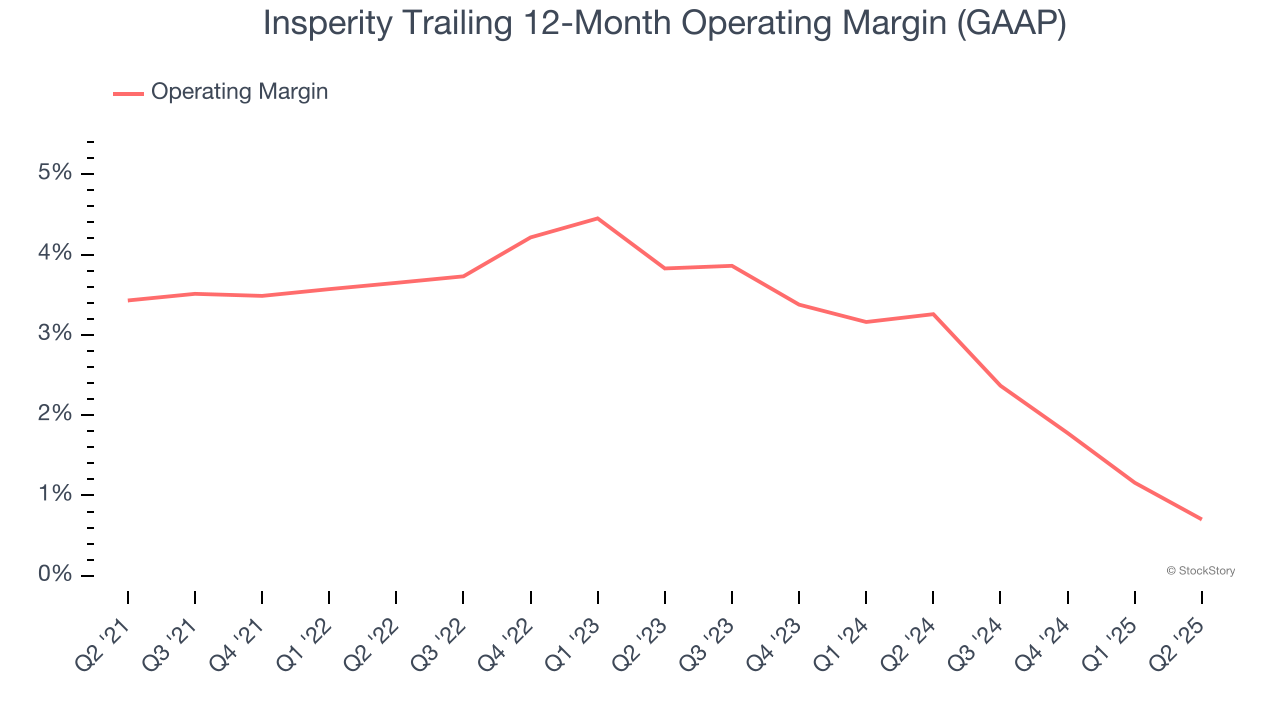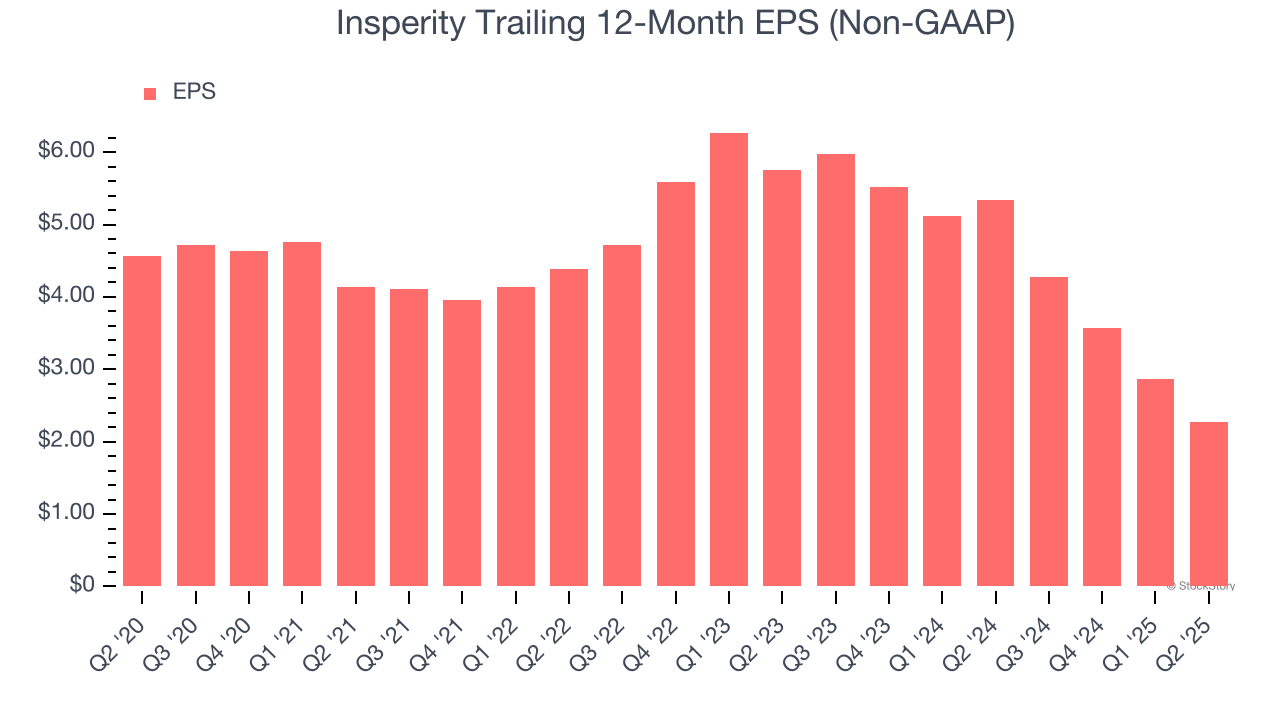
HR outsourcing provider Insperity (NYSE:NSP) met Wall Street’s revenue expectations in Q2 CY2025, with sales up 3.3% year on year to $1.66 billion. Its non-GAAP profit of $0.26 per share was 36.3% below analysts’ consensus estimates.
Is now the time to buy Insperity? Find out by accessing our full research report, it’s free.
Insperity (NSP) Q2 CY2025 Highlights:
- Revenue: $1.66 billion vs analyst estimates of $1.66 billion (3.3% year-on-year growth, in line)
- Adjusted EPS: $0.26 vs analyst expectations of $0.41 (36.3% miss)
- Adjusted EBITDA: $32 million vs analyst estimates of $39.46 million (1.9% margin, 18.9% miss)
- Management lowered its full-year Adjusted EPS guidance to $2.16 at the midpoint, a 21.6% decrease
- EBITDA guidance for the full year is $187.5 million at the midpoint, below analyst estimates of $202.7 million
- Operating Margin: -0.4%, down from 1.4% in the same quarter last year
- Market Capitalization: $2.24 billion
“Despite our reported Q2 results and the associated lower guidance for this year, we have experienced recent growth momentum and are executing a plan over the balance of the year that we believe lays the foundation for accelerated growth and improved profitability in 2026,” said Paul J. Sarvadi, Insperity chairman and chief executive officer.
Company Overview
Pioneering the professional employer organization (PEO) industry it helped establish, Insperity (NYSE:NSP) provides human resources outsourcing services to small and medium-sized businesses, handling payroll, benefits, compliance, and HR administration.
Revenue Growth
Reviewing a company’s long-term sales performance reveals insights into its quality. Even a bad business can shine for one or two quarters, but a top-tier one grows for years.
With $6.70 billion in revenue over the past 12 months, Insperity is one of the larger companies in the business services industry and benefits from a well-known brand that influences purchasing decisions.
As you can see below, Insperity grew its sales at an impressive 9% compounded annual growth rate over the last five years. This shows it had high demand, a useful starting point for our analysis.

Long-term growth is the most important, but within business services, a half-decade historical view may miss new innovations or demand cycles. Insperity’s recent performance shows its demand has slowed significantly as its annualized revenue growth of 3.2% over the last two years was well below its five-year trend. 
This quarter, Insperity grew its revenue by 3.3% year on year, and its $1.66 billion of revenue was in line with Wall Street’s estimates.
Looking ahead, sell-side analysts expect revenue to grow 4.4% over the next 12 months, similar to its two-year rate. While this projection indicates its newer products and services will catalyze better top-line performance, it is still below the sector average.
Today’s young investors won’t have read the timeless lessons in Gorilla Game: Picking Winners In High Technology because it was written more than 20 years ago when Microsoft and Apple were first establishing their supremacy. But if we apply the same principles, then enterprise software stocks leveraging their own generative AI capabilities may well be the Gorillas of the future. So, in that spirit, we are excited to present our Special Free Report on a profitable, fast-growing enterprise software stock that is already riding the automation wave and looking to catch the generative AI next.
Operating Margin
Insperity was profitable over the last five years but held back by its large cost base. Its average operating margin of 2.9% was weak for a business services business.
Analyzing the trend in its profitability, Insperity’s operating margin decreased by 2.7 percentage points over the last five years. This raises questions about the company’s expense base because its revenue growth should have given it leverage on its fixed costs, resulting in better economies of scale and profitability. Insperity’s performance was poor no matter how you look at it - it shows that costs were rising and it couldn’t pass them onto its customers.

This quarter, Insperity’s breakeven margin was down 1.9 percentage points year on year. This reduction is quite minuscule and indicates the company’s overall cost structure has been relatively stable.
Earnings Per Share
We track the long-term change in earnings per share (EPS) for the same reason as long-term revenue growth. Compared to revenue, however, EPS highlights whether a company’s growth is profitable.
Sadly for Insperity, its EPS declined by 13% annually over the last five years while its revenue grew by 9%. This tells us the company became less profitable on a per-share basis as it expanded due to non-fundamental factors such as interest expenses and taxes.

Diving into the nuances of Insperity’s earnings can give us a better understanding of its performance. As we mentioned earlier, Insperity’s operating margin declined by 2.7 percentage points over the last five years. This was the most relevant factor (aside from the revenue impact) behind its lower earnings; interest expenses and taxes can also affect EPS but don’t tell us as much about a company’s fundamentals.
Like with revenue, we analyze EPS over a more recent period because it can provide insight into an emerging theme or development for the business.
For Insperity, its two-year annual EPS declines of 37.2% show it’s continued to underperform. These results were bad no matter how you slice the data.
In Q2, Insperity reported adjusted EPS at $0.26, down from $0.86 in the same quarter last year. This print missed analysts’ estimates. Over the next 12 months, Wall Street expects Insperity’s full-year EPS of $2.27 to grow 40.7%.
Key Takeaways from Insperity’s Q2 Results
We struggled to find many positives in these results. Revenue was in line and EPS missed, which isn't a good start. Looking ahead, its full-year EPS guidance was lowered and missed. Its EPS guidance for next quarter fell also short of Wall Street’s estimates. Overall, this was a weaker quarter. The stock traded down 5.2% to $56.51 immediately following the results.
Insperity didn’t show it’s best hand this quarter, but does that create an opportunity to buy the stock right now? We think that the latest quarter is only one piece of the longer-term business quality puzzle. Quality, when combined with valuation, can help determine if the stock is a buy. We cover that in our actionable full research report which you can read here, it’s free.
